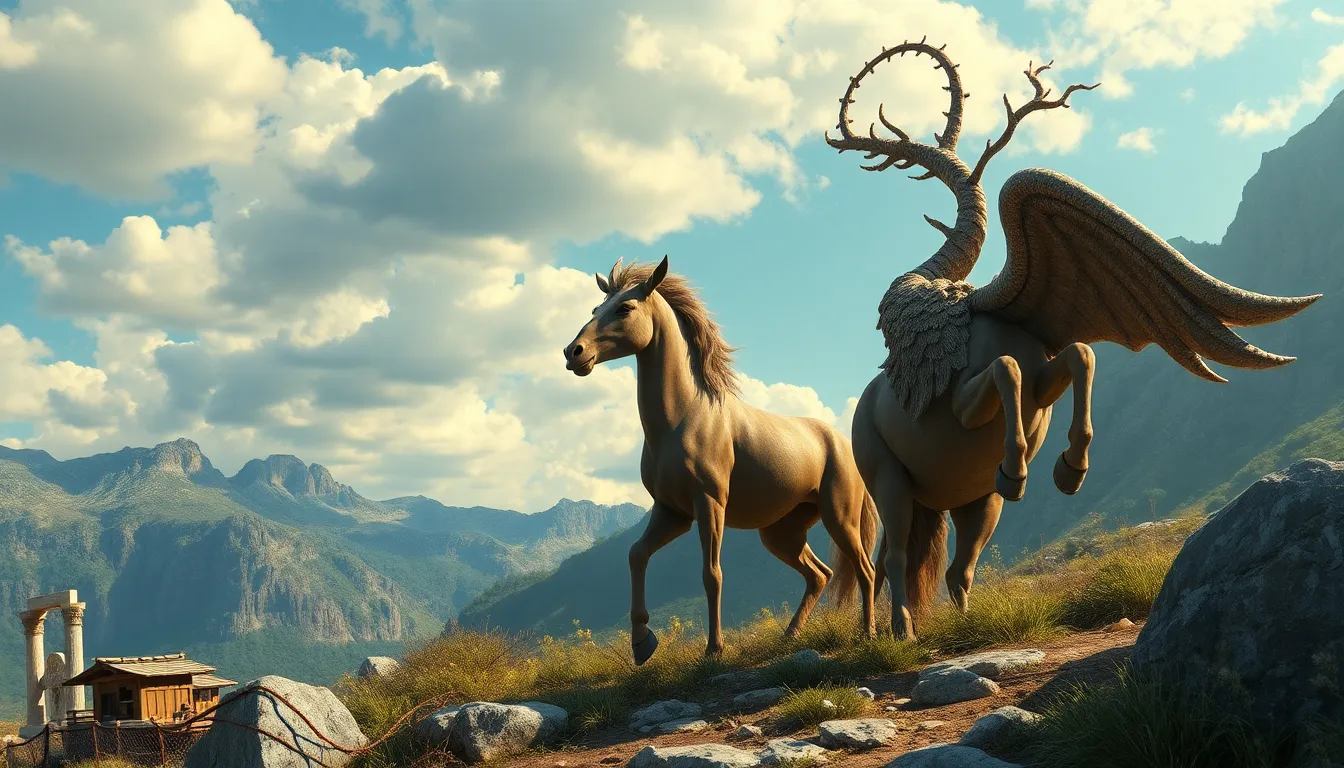Centaur Myths: Bridging the Gap Between Civilization and Nature
I. Introduction
In the realm of Greek mythology, centaurs are fascinating creatures that embody both the spirit of humanity and the wildness of nature. Defined as beings with the upper body of a human and the lower body of a horse, centaurs serve as powerful symbols representing the duality of existence.
Centaurs hold significant cultural importance, not only in ancient Greece but also across various civilizations. They are often depicted as both noble and savage, reflecting the complexities of human nature. The purpose of this article is to explore the rich symbolism of centaurs as a bridge between civilization and the untamed aspects of nature.
II. Historical Origins of Centaur Myths
The origins of centaur myths can be traced back to early Greek mythology. They first appear in Homeric epics, where they are often portrayed as wild and unruly beings.
- A. Early references in Greek mythology: Centaurs are mentioned in works such as the “Iliad” and “Odyssey,” often characterized by their chaotic nature and conflict with humans.
- B. Centaurs in other cultures: Various cultures have similar beings; for instance, the Mesopotamian god Gilgamesh encounters creatures that share traits with centaurs.
- C. Evolution of centaur myths through ages: Over time, centaurs have been depicted in various ways, from brutish warriors to wise philosophers, reflecting changing societal values.
III. Symbolism of Centaurs: The Dual Nature
At the heart of centaur mythology lies the representation of duality. They embody the inherent conflict between the civilized and the wild aspects of existence.
- A. Representation of the human-animal dichotomy: Centaurs symbolize the blending of human intellect and animal instinct, highlighting the struggle we all face between reason and primal urges.
- B. Centaurs as embodiments of instinct and reason: While some centaurs, like Chiron, are depicted as wise and noble, others, such as the centaurs from the battle of the Lapiths and Centaurs, represent unrestrained lust and violence.
- C. The struggle between civilization and primal urges: This duality serves as a reminder of our own internal conflicts, as we navigate the balance between societal expectations and our natural instincts.
IV. Centaurs in Literature and Art
Centaurs have captivated the imagination of writers and artists throughout history, leading to diverse depictions in various forms of art and literature.
- A. Depictions in ancient texts: Notable ancient authors like Homer and Hesiod illustrated centaurs in their works, often portraying them as fierce warriors or wise mentors.
- B. Renaissance and modern interpretations in art: The Renaissance period saw a resurgence of interest in classical mythology, leading to new interpretations of centaurs in paintings and sculptures.
- C. The role of centaurs in contemporary literature and media: Today, centaurs appear in various forms of media, including fantasy novels and films, often symbolizing inner conflict and the connection to nature.
V. Centaurs and Their Relationship with Nature
Centaurs are not merely hybrids of man and beast; they also represent a profound connection to the natural world.
- A. Centaurs as guardians of the wild: Many stories depict centaurs as protectors of forests and natural landscapes, emphasizing their role as stewards of the earth.
- B. Interactions between centaurs and other mythological creatures: Centaurs often interact with other mythical beings, such as nymphs and satyrs, showcasing a complex relationship with the environment.
- C. Reflections of environmental themes in centaur stories: The conflicts centaurs face often mirror contemporary environmental challenges, underscoring the need for harmony between humanity and nature.
VI. The Cultural Impact of Centaur Myths
The cultural implications of centaur myths extend beyond mere storytelling, influencing various fields of thought and popular culture.
- A. Influence on Western philosophy and psychology: Centaurs have been used as metaphors for the dual nature of humanity in philosophical discussions, especially in the works of thinkers like Plato and Freud.
- B. Centaurs in popular culture: They have made appearances in films, video games, and literature, often symbolizing the struggle between civilization and nature.
- C. The relevance of centaur myths in today’s society: As we grapple with environmental issues, centaurs serve as a reminder of our connection to nature and the consequences of neglecting it.
VII. Modern Interpretations and Relevance
In contemporary society, centaurs can be seen as symbols of the challenges we face in a rapidly changing world.
- A. Centaurs as symbols of ecological awareness: They embody the need for balance between technological progress and environmental stewardship.
- B. Bridging the gap between technological advancement and nature: Centaurs represent the dialogue between our advancements and the preservation of the natural world.
- C. The centaur as a metaphor for personal identity and duality: Individuals today often navigate their own dualities, much like centaurs, balancing various aspects of their identity.
VIII. Conclusion
In summary, centaur myths provide a rich tapestry of symbolism that examines humanity’s relationship with nature. From their historical origins to their representation in art and literature, centaurs serve as reminders of the balance we must maintain between our civilized selves and our primal instincts.
The enduring legacy of centaur myths invites us to reflect on our role in the natural world and the importance of harmony between civilization and the wilderness. As we explore these ancient tales, we can appreciate the lessons they offer in contemporary life, encouraging a deeper understanding of our connection to the environment and to ourselves.




